What's New
Displaying results 2401 - 2410 of 4052
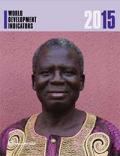
Resource | Publications,
World Development Indicators (WDI) publication is a collection of time-series data for 214 economies, with many indicators going back more than 50 years. WDI provides cross-country comparable statistics about development and people’s lives around the globe. It is divided into six sections -- World View, People, Environment, Economy, States and Markets, and Global Links. New online tables, previously published in the book, are now available from wdi.worldbank.org/tables and they provide data from the most up-to-date database.
The year 2015 is when the world aimed to achieve many of the targets set out in the Millennium Development Goals. Some have been met. The rate of extreme poverty and the proportion of people without access to safe drinking water were both halved between 1990 and 2010, five years ahead of schedule. But some targets have not been achieved, and the aggregates used to measure global trends can mask the uneven progress in some regions and countries. This edition of World Development Indicators uses the latest available data and forecasts to show whether the goals have been achieved and highlights some of the differences between countries and regions that underlie the trends.
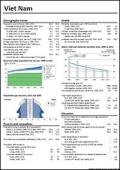
Resource | Data Sheets,
Statistical Yearbook for Asia and the Pacific 2015 - facts and trends at the outset of the 2030 Development Agenda, which provides a first snapshot overview of development trends aligned with the new 2030 Agenda for Sustainable Development. This information will help to ensure better, more informed decision-making and will directly support the efforts of governments, development partners, and the people of Asia and the Pacific to successfully implement the ambitious goals and targets of the 2030 Agenda.
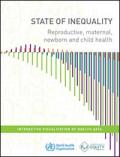
Resource | Publications,
The report reveals that significant inequalities exist in low- and middle-income countries in the area of reproductive, maternal, newborn and child health. The good health of women, infants and children is essential for sustainable development, and there is still much work to be done. Discussions will increasingly call into question how efforts to improve reproductive, maternal, newborn and child health can achieve early and accelerated progress among those who are falling behind.
This State of inequality report helps to focus the monitoring and reporting of health inequalities, and provides comprehensive information on the state of inequality in reproductive, maternal, newborn and child health in low- and middle-income countries.
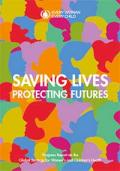
Resource | Publications,
The era of the Millennium Development Goals (MDGs) has witnessed dramatic and unprecedented progress in reducing child and maternal deaths. As a result, 6.4 million fewer children died in 2013 compared to 1990, and maternal deaths have been cut by almost half. By building on these gains and mobilizing additional resources, it is clear that the world possesses the means to make preventable deaths among women and children a thing of the past, laying the foundations for a healthier, more secure and more equitable world.
A pivotal moment occurred in 2010, when the United Nations Secretary-General launched the Global Strategy for Women’s and Children’s Health (Global Strategy), primarily to accelerate progress towards achievement of MDGs 4, 5 and 6, which were lagging furthest behind. As a result of five years of hard work and innovative partnership under the Every Woman Every Child movement, the momentum for progress and change has grown steadily. Our task now is to nurture and build on this forward motion and on the lessons learned, until we finally end the preventable deaths of women, newborns, children and adolescents in all parts of the world.
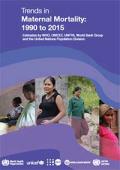
Resource | Publications,
Millennium Development Goal (MDG) 5 Target 5A called for the reduction of maternal mortality ratio by three quarters between 1990 and 2015. It has been a challenge to assess the extent of progress due to the lack of reliable and accurate maternal mortality data – particularly in developing-country settings where maternal mortality is high. As part of ongoing efforts, the WHO, UNICEF, UNFPA, World Bank Group and the United Nations Population Division updated estimates of maternal mortality for the years 1990, 1995, 2000, 2005 and 2015.
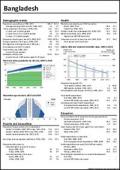
Resource | Data Sheets,
Statistical Yearbook for Asia and the Pacific 2015 - facts and trends at the outset of the 2030 Development Agenda, which provides a first snapshot overview of development trends aligned with the new 2030 Agenda for Sustainable Development. This information will help to ensure better, more informed decision-making and will directly support the efforts of governments, development partners, and the people of Asia and the Pacific to successfully implement the ambitious goals and targets of the 2030 Agenda.
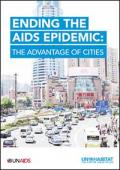
Resource | Publications,
Urbanization is changing the way we live and work and how we approach problems and think about the future. Already the majority of the world’s population lives in urban areas, and by 2050 it is projected that seven in 10 people will live in cities and municipalities.
There are important reasons why people are choosing to live in urban areas. Cities are sources of economic growth and prosperity, serve as centres of innovation and offer extraordinary educational, cultural and recreational opportunities. Urban areas often have greater success in tackling difficult challenges, due to cities’ comparatively greater concentration of services, creativity and productive capacity.
This report includes examples of cities in every region that are displaying courageous, innovative, transformative leadership on AIDS. As of August 2015, more than 100 cities have formally joined as partners in the Fast-Track Cities Initiative, pledging to take focused action to speed the day when the epidemic is no longer a public health threat.
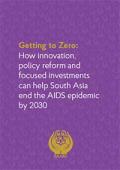
Resource | Publications,
Home to a quarter of the world’s population, SAARC countries of Afghanistan, Bangladesh, Bhutan, India, Maldives, Nepal, Pakistan, and Sri Lanka, are now on the threshold of an unprecedented social and economic transformation.
SAARC’s initiatives to foster peace and cooperation, innovative policies to encourage trade and investment and a leadership committed to positive change are playing a key role in unleashing the enormous potential of the region. Above all, the most important factor in the emergence of South Asia as a global force are its people. With progression and development, come questions of sustainability. Does progress mean countries of South Asia have a secure future?
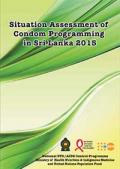
Resource | Publications,
Condoms are the only method of contraception to get protected from sexually transmitted infections, as well as pregnancy. Condom use for unprotected sex, has been recognized as one of the most successful prevention strategies for HIV infection worldwide, including in Sri Lanka. Condoms are widely available in the country and are distributed through retail outlets, STD clinics, family planning clinics and Public Health Midwives.
The main objective of the situation assessment was to assess the availability and use of condoms in the context of HIV/AIDS, STIs situation, family planning & the factors affecting condom programming in Sri Lanka in terms of use, availability, distribution, challenges and most pressing needs for improving condom programming. The initiative had been supported by the United Nations Population Fund.
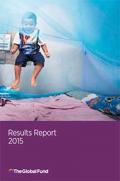
Resource | Publications,
The Global Fund partnership brings together a myriad of strengths: finances; technical expertise; the experience and knowledge of communities affected by HIV, tuberculosis and malaria; innovation; and a capacity for constant evolution. The partners who comprise the Global Fund come with diverse abilities and points of view, yet they share a determination to serve people, to strive for social justice, and to achieve impact against HIV, TB and malaria and ultimately end the epidemics.
This report delivers a summary of the impact and results the Global Fund partnership was able to achieve by 2015, showing cumulative progress since the Global Fund was created in 2002. It is a collective effort, combining the strong contributions made by governments, civil society, the private sector and people affected by HIV, TB and malaria.





